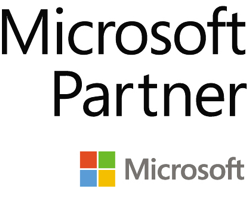
Data Center Migration Best Practices
Data migration is the process of making an exact copy of an organization’s current data from one device to another device—preferably without disrupting or disabling active applications—and then redirecting all input/output (I/O) activity to the new device. There are a variety of circumstances that might cause an organization to undertake a data migration, including:
- Server or storage technology replacement or upgrade.
- Server or storage consolidation.
- Relocation of the data center.
- Server or storage equipment maintenance, including workload balancing or other performance-related maintenance.
However, an optimally functioning datacenter is business-critical. And chances are that your organization’s data center is inadequate in some way: Perhaps it’s growing out-of-capacity, compute requirements, operationally exorbitant, outdated or simply don’t match up to the growth of your organization.
In the past, migration projects were performed during off-hours; however, today’s 24x7 environment has no available downtime window. Enterprises must employ a consistent, reliable and repeatable methodology for migrations that incorporates planning, technology implementation and validation to minimize risk.
Some of the best practices for a data center migration include:
Planning:
Detailed planning helps enterprises identify potential problems and define strategies on how they can be avoided. While the amount of planning depends on the size and scope of the migration, the planning process generally should involve:
- Determining the requirements of the migration.
- Identifying the current and future environment.
- Creating and documenting the migration plan.
- Determining which hardware or software is needed for a successful migration.
- Incorporating the following design requirements—migration architecture, specific hardware and software requirements, migration procedures and deployment and test plans.
- Obtaining any software licenses needed to perform the migration.
- Defining which data to migrate first, whether and how long to take applications offline, and determining which internal and external audiences should be informed regarding the migration.
Migration:
During the migration phase, enterprises need to:
- Communicate their plans.
- Obtain, install and configure any necessary software.
- Perform a premigration data validation test.
- Perform the migration.
- Perform post-migration testing to confirm that the data is in the same state after the migration as it was before.
Validation:
Post-migration, enterprises should compile migration statistics and prepare a report to highlight what worked, what didn’t work and lessons learned. The report should be shared with all members of the migration team. These types of reports are critical in building a repeatable and consistent process through continuous process improvement—building on what worked and fixing or changing what didn’t work. Further, documenting the migration process can help train staff, and simplify or streamline the next migration, reducing both expense and risk.
For more details on data center migration, contact an SNP representative.




